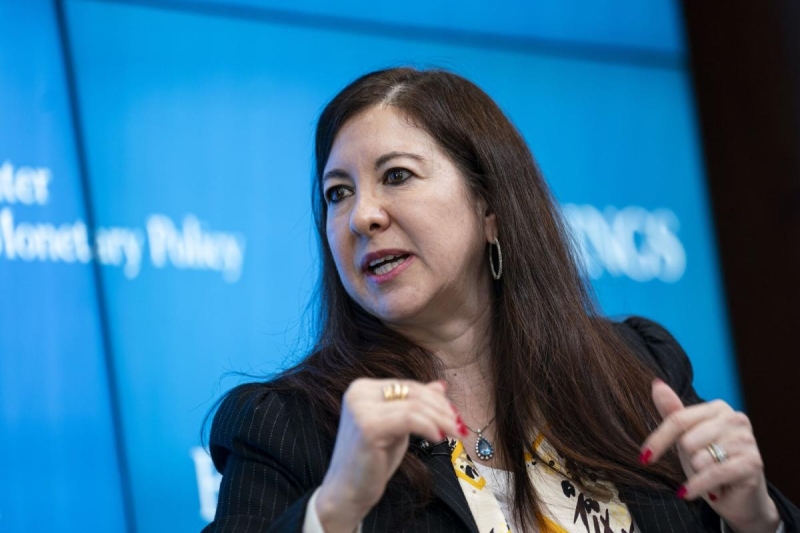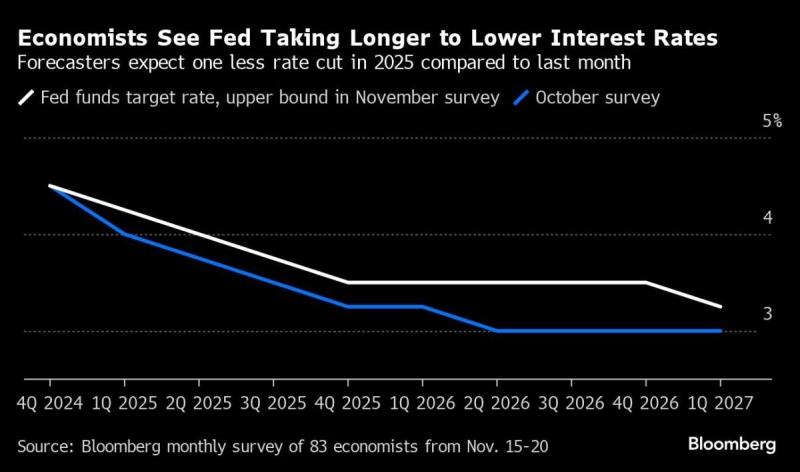
(Bloomberg) — Federal Reserve Governor Adriana Kugler said she “strongly supported” the central bank’s decision to lower borrowing costs by a half point last week, adding it will be appropriate to make additional rate cuts if inflation continues to ease as expected.
Most Read from Bloomberg
Sustained progress on inflation and a moderating labor market mean it is time for members of the Federal Open Market Committee to ease policy and pay close attention to the employment side of their mandate as well, she said.
“The labor market remains resilient, but the FOMC now needs to balance its focus so we can continue making progress on disinflation while avoiding unnecessary pain and weakness in the economy as disinflation continues in the right trajectory,” Kugler said Wednesday in remarks prepared for an event hosted by the Harvard Kennedy School in Cambridge, Massachusetts.
“I strongly supported last week’s decision and, if progress on inflation continues as I expect, I will support additional cuts in the federal funds rate going forward,” she said.
Kugler, along with most of her colleagues, voted to lower the central bank’s benchmark rate by a half percentage point last week — a larger move than many economists had expected. Fed Chair Jerome Powell said the outsize cut was meant to protect the strong labor market as hiring slowed and price pressures eased.
But policymakers have not committed to a set pace, saying the size of future cuts will depend on what happens in the economy. Fresh projections released last week showed a range of views over how much further the central bank should ease policy by year’s end.
The median projection from officials pointed to another 50 basis points of cuts over the Fed’s two remaining policy meetings this year. But seven of 19 officials envisioned only 25 basis points of additional cuts and two opposed any further moves in 2024.
It’s possible that some officials may adjust their timeline for cuts if the economy changes and their forecasts are revised, Kugler said Wednesday in a question-and-answer session following her remarks. “We don’t know what’s going to happen exactly in the next couple of meetings,” she said, noting that “everybody” thinks monetary policy is restrictive.
Labor Market
Kugler said in her speech that there has been “a significant moderation in the labor market,” pointing to slower hiring and fewer people quitting their jobs. Recent revisions to the payrolls figures make it important for policymakers to review a range of labor market indicators, she added.
Still, the unemployment rate remains low by historical standards, Kugler said. “In summary, after a period of demand exceeding supply, the labor market appears to have rebalanced.”
Wage growth has moderated to a point where it is unlikely to add to price pressures, she said. And monthly job gains could be near, or below, the so-called “breakeven” rate, or the pace of job growth needed to keep up with population growth and hold the unemployment rate stable, Kugler said.
Officials have to act now to keep the labor market from softening further, she said. “We’re at a place where inflation and the trajectory of inflation is such that we’re moving towards 2% and the labor market has cooled,” Kugler said. “It still is in a very good place but we don’t necessarily want to weaken it further.”
(Updates with more remarks beginning in eighth paragraph.)
Most Read from Bloomberg Businessweek
©2024 Bloomberg L.P.





